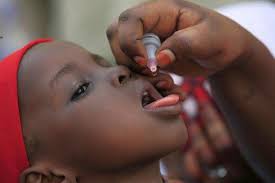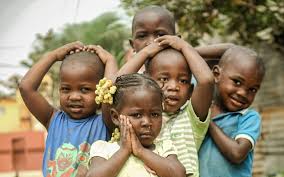
Daniel Otera
In Gbako, a rural community in Niger State, mothers still carry severely malnourished babies to overstretched primary healthcare centres underscoring a grim reality that tempers the optimism surrounding the state’s ambitious new health initiative.
Earlier this week, the Niger State Government launched the May/June 2025 Maternal, Newborn and Child Health Week (MNCHW) alongside the National Immunisation Plus Days, with the bold target of immunising two million children under the age of five.
The campaign, inaugurated in Minna by Deputy Governor Yakubu Garba on behalf of Governor Umaru Bago, also aims to reach 600 women with essential maternal health services.
It is part of the state’s broader New Niger Agenda, and is expected to deliver a range of free services, including deworming, antenatal care, vitamin A supplementation, birth registration, and the distribution of long-lasting insecticidal nets.
Governor Bago, through his representative, described the programme as a strategic step toward reducing the state’s persistently high rates of maternal and child mortality.
“Good nutrition is crucial for healthier lives, stronger communities, and a productive state,” he stated, reaffirming his administration’s commitment to healthcare reform.

He also disclosed that primary healthcare centres across all 274 wards have been upgraded, and additional health professionals recruited to strengthen rural healthcare delivery.
However, behind the high-profile launch lies a pressing public health challenge: Niger State continues to grapple with one of the highest child malnutrition rates in Nigeria, raising concerns over whether short-term campaigns can yield sustainable impact.
According to the 2023 Joint Malnutrition Estimates by UNICEF, WHO, and the World Bank, 48% of children under five in Niger State are stunted, while 11% suffer from wasting both indicators of chronic and acute undernutrition.
These figures significantly exceed national averages, suggesting that many children may not fully benefit from immunisation and maternal health interventions without corresponding improvements in nutrition.
“The importance of immunisation is undeniable,” said Theresa Pamma, a WASH Specialist at the UNICEF Kaduna Field Office, during the event.
“But unless nutrition and clean water access are addressed simultaneously, the outcomes may be limited.” Ms Pamma commended the government’s efforts but emphasised the need for a multisectoral response to child health.
According to the 2016–17 Nigeria National Immunisation Coverage Survey, only 42% of children in Niger State received all basic vaccinations, placing the state among the worst-performing in the northern region. Immunisation rates were even lower in rural LGAs such as Mariga, Magama, and Rijau, where poor road infrastructure and weak cold chain systems continue to impede vaccine delivery and outreach.
Although the government claims to have upgraded PHCs across the state’s 274 wards, field investigations and civil society monitors present a different reality.

According to findings by WikkiTimes, several PHCs in Agaie Local Government Area remain in poor condition despite receiving funds from the Basic Health Care Provision Fund (BHCPF).
For instance, the Etsugaie PHC still operates without nurses or midwives, manned only by two healthcare extension workers. The facility also suffers from severe drug shortages, leaky roofs, and a lack of basic equipment contradicting government reports of improvements.
In a related report by Hikima RTV, analysis of the 2023 Niger State budget revealed that although ₦7.25 billion was allocated for PHC upgrades, only a fraction of the funds were reportedly released and implemented.
This gap between budgetary allocations and on-ground delivery continues to undermine rural healthcare services.
These findings, echoed by civil society platforms like BudgIT’s Tracka, highlight persistent challenges such as absentee staff, inadequate drug supply, and decaying infrastructure raising questions about the effectiveness of government interventions and oversight mechanisms.
“We were told our PHC was upgraded, but we still don’t have electricity or enough beds,” a health worker in Lavun LGA told a community development forum, excerpts of which were reviewed by The Journal.
“We do what we can, but when children arrive severely malnourished, deworming tablets won’t save them.”
Despite the administration’s best intentions, citizen confidence in the system remains mixed.
While some applaud the outreach of MNCHW programmes, others argue that periodic campaigns cannot replace the need for continuous care, improved nutrition, and fully staffed, functional facilities.
The World Health Organisation (WHO) has pledged to continue supporting the state’s healthcare delivery, particularly in routine immunisation and outbreak preparedness.
WHO Coordinator in Niger, Dr Aliyu Suleiman, applauded the campaign launch but noted that long-term results require consistent data monitoring and strengthened supply chains.
Development partners including UNICEF and WHO have repeatedly called for stronger data-driven accountability mechanisms to ensure that declared health targets translate into measurable community-level outcomes.
While the 2025 MNCHW provides a useful snapshot of government priorities, tracking actual coverage and post-campaign health indicators will be essential in assessing its success.
